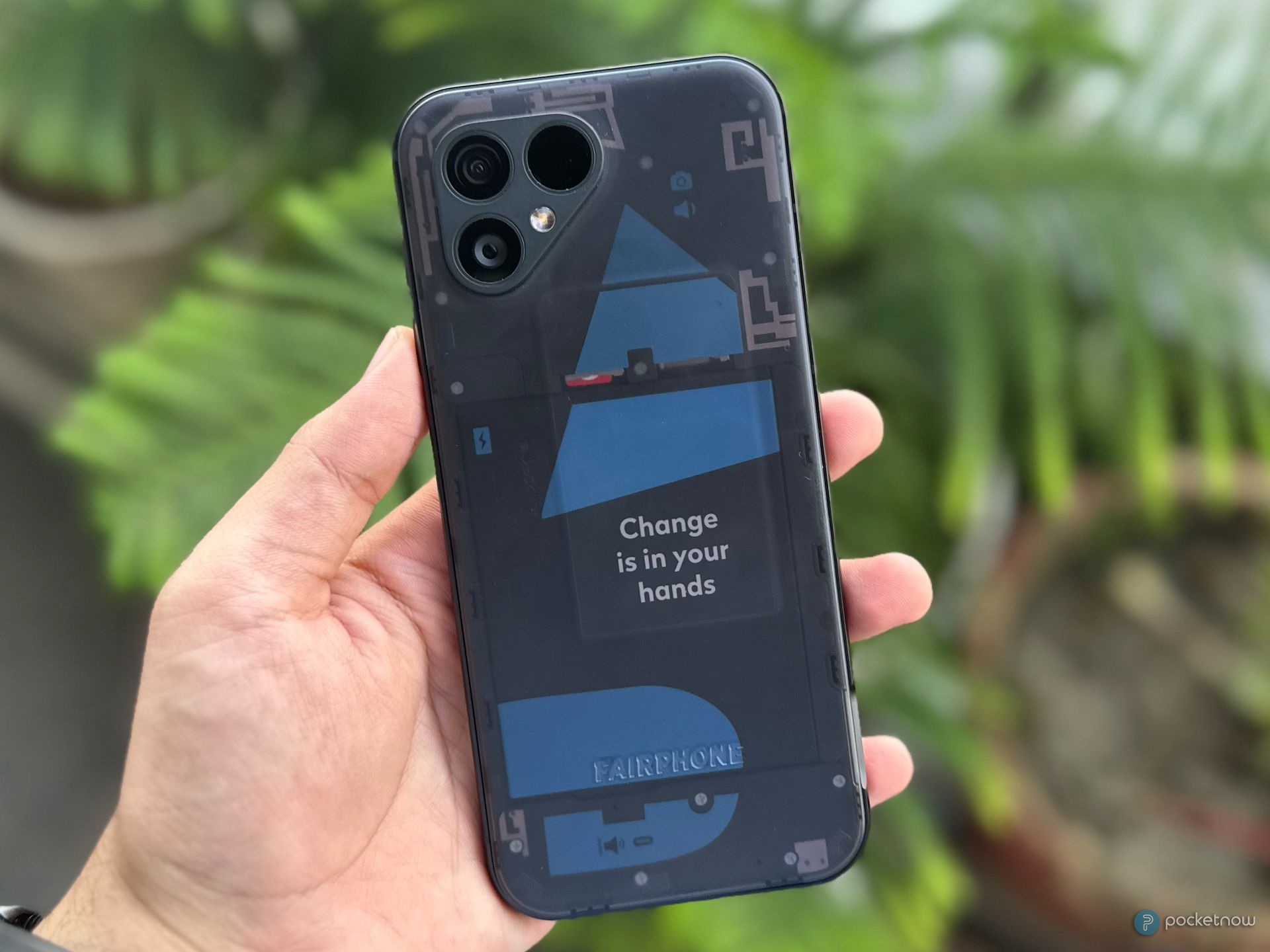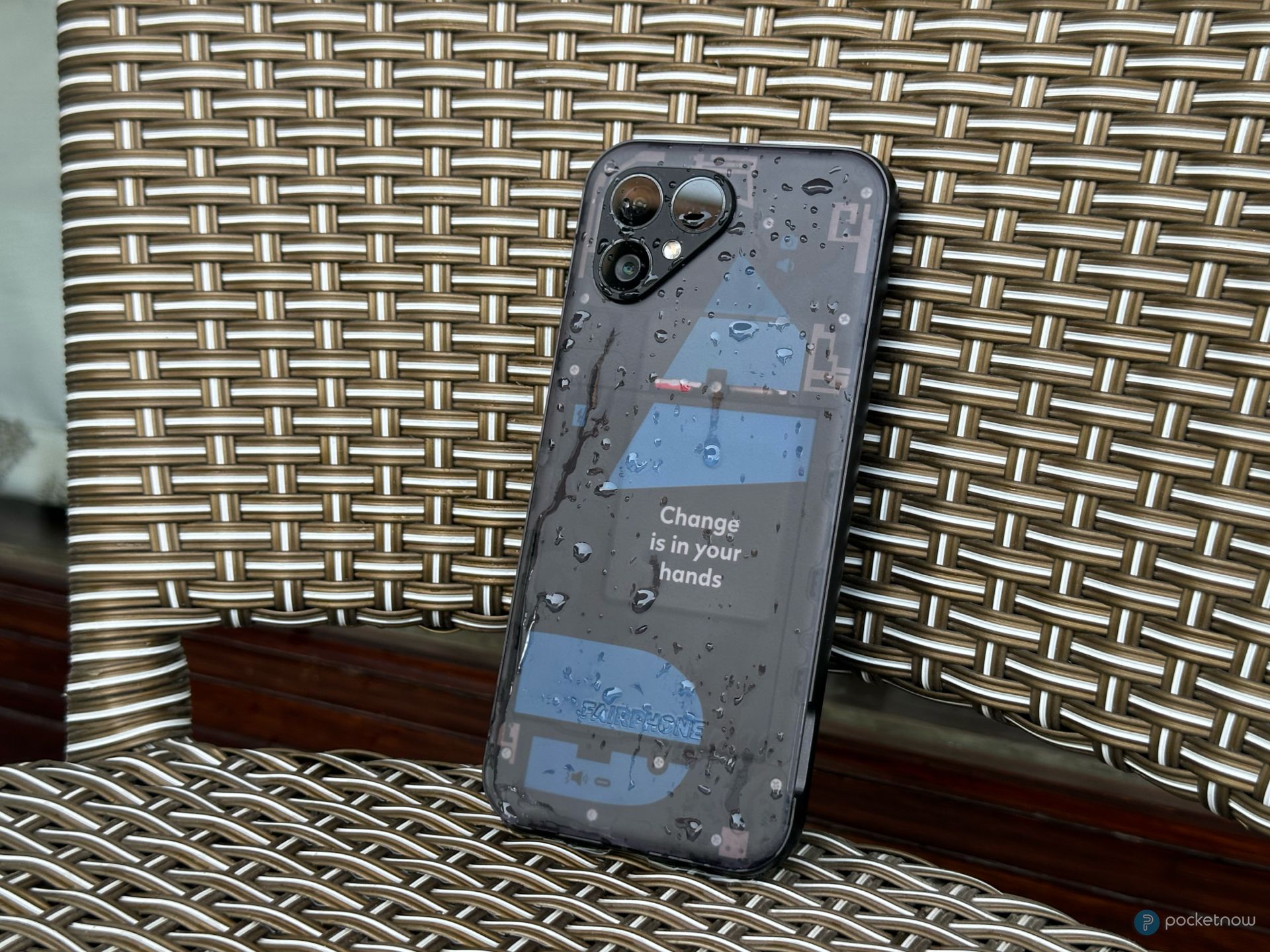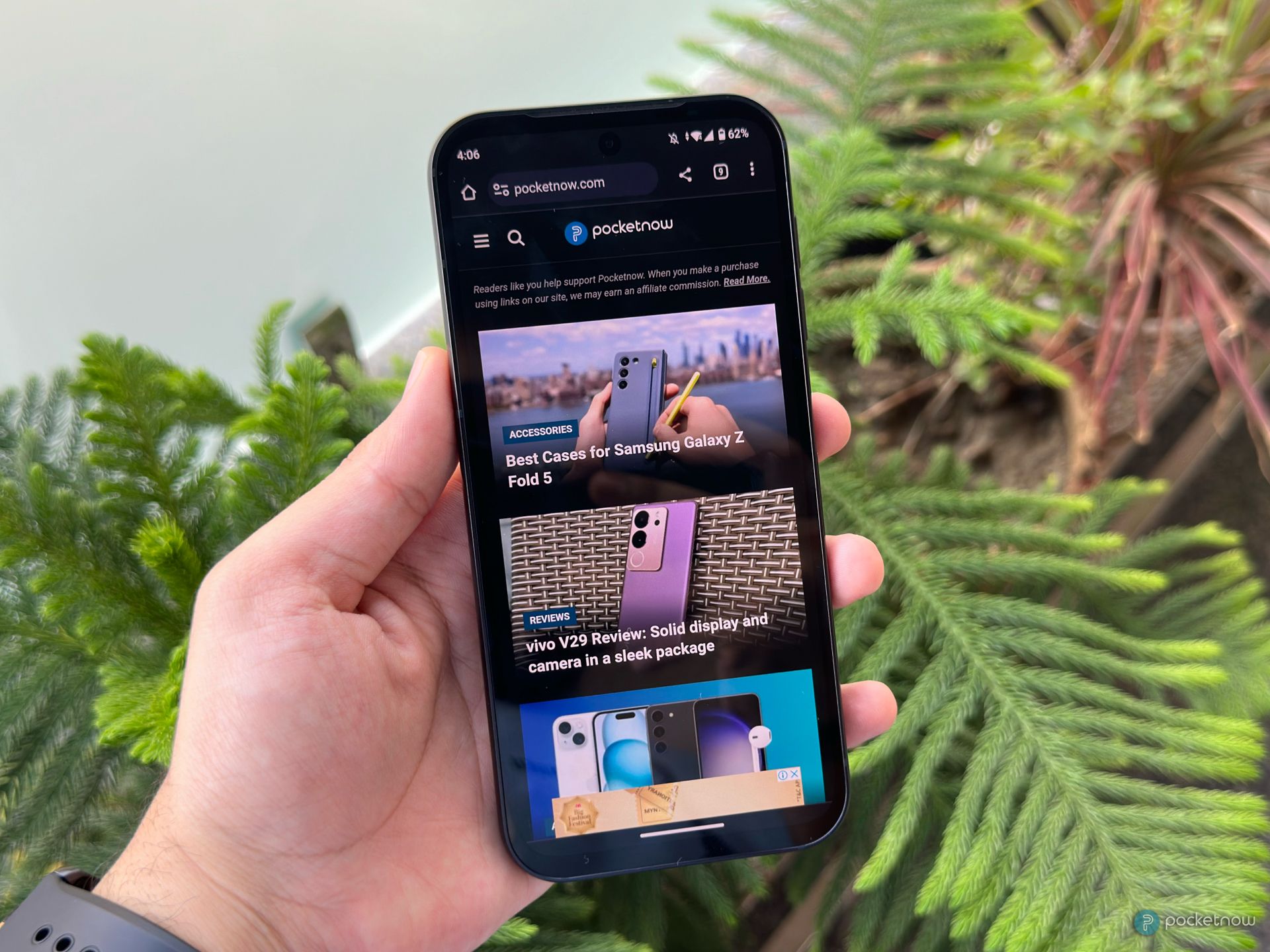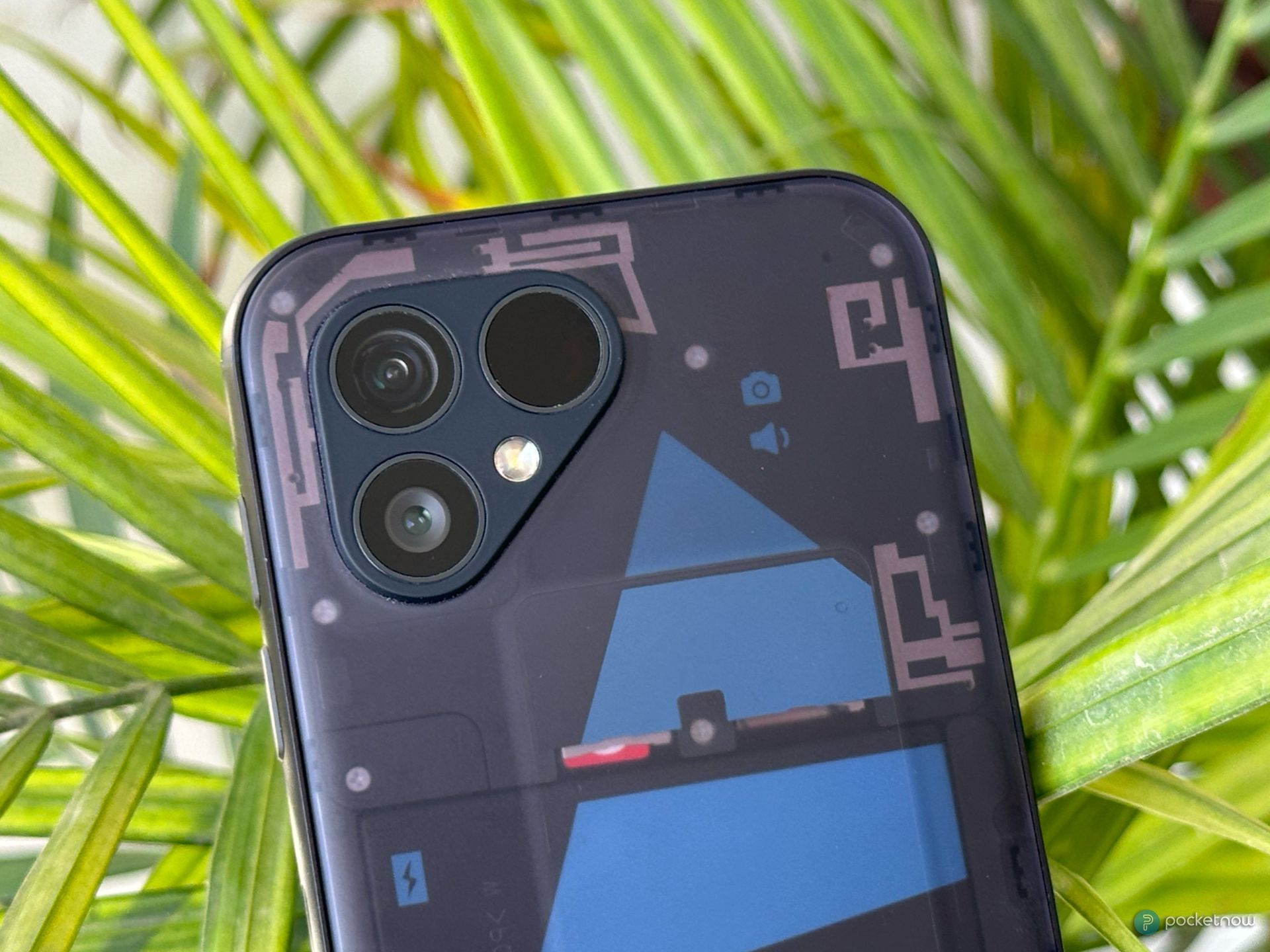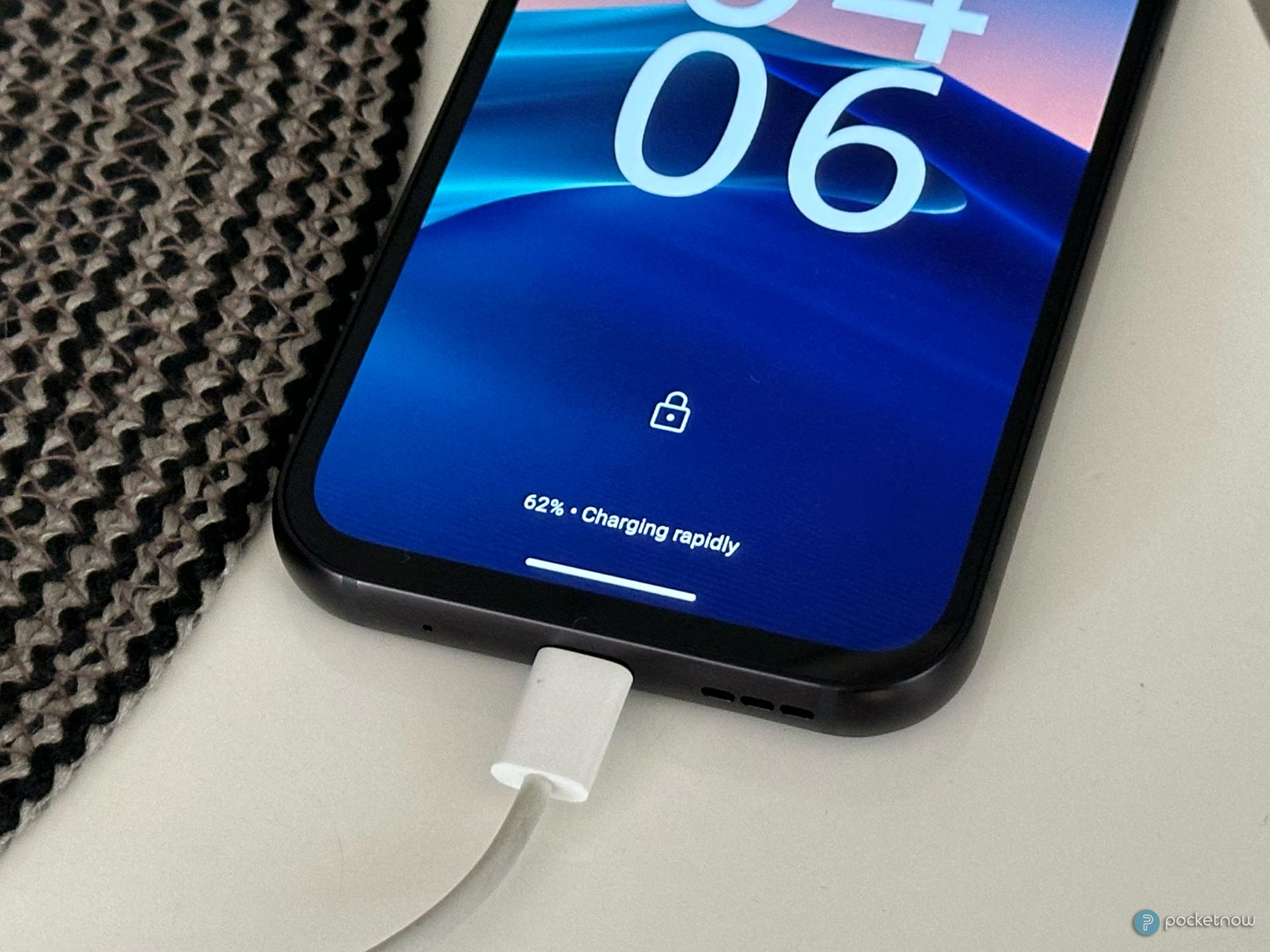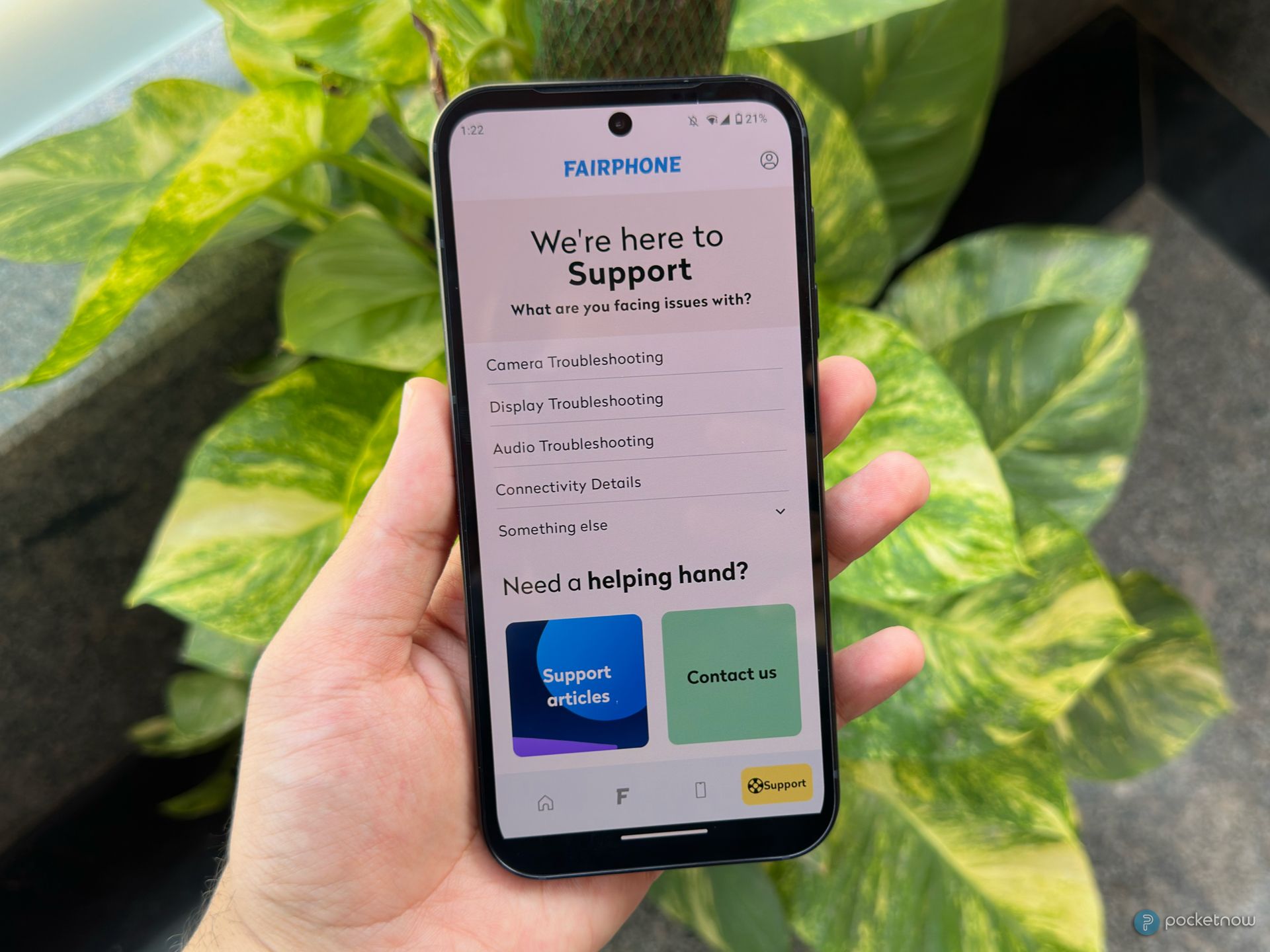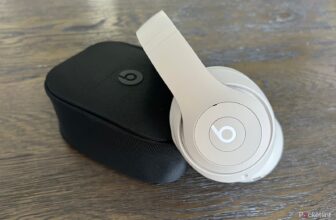
[adinserter block=”8″]
Quick Links
- Battery life and charging
It’s 2023, and unsurprisingly, there are a lot of best Android smartphones out there. But all of these flagship smartphones have one common problem: they’re not easy to open and repair. While companies like Samsung and Apple have been focusing on making their smartphones more sustainable, they still fall short in terms of repairability.
This is where the Fairphone 5 comes in. It aims to accomplish one primary goal: creating an environmentally friendly smartphone that is easy to repair, all while delivering outstanding performance. But does it achieve this goal? Find out more in our comprehensive Fairphone 5 review.
Fairphone 5
The Fairphone 5 is the most repairable phone we’ve tested, and it looks just like a modern flagship. It’s powerful, has a great battery, and a good camera.
- Material
- Corning Gorilla Glass 5, aluminum frame, plastic back
- Dimensions
- 161.6 x 75.8 x 9.6 mm
- Weight
- 212 grams
- Display
- 6.46-inch, OLED, 90Hz, 880 nits
- SoC
- Qualcomm QCM6490 (6nm node process)
- RAM
- 8GB
- Storage
- 256GB (expandable)
- Battery
- 4200 mAh (removable)
- Ports
- USB-C
- Charge speed
- 30W, 0-50% in 20 min
- Main Camera
- 50 MP, f/1.9, (wide), 1.0µm, PDAF, OIS
- Wide-Angle Camera
- 50 MP, f/2.2, PDAF
- Front camera
- 50 MP, f/2.5, (wide)
- IP Rating
- IP55
- Micro SD card support
- Yes
- Security
- Fingerprint (side-mounted), Face Unlock, PIN, Pattern, Password
- Operating System
- Android 13
- Colors
- Matte Black, Sky Blue, Transparent Edition
- Comfortable grip and sleek design
- Simple to take apart and fix
- Durable with IP55 rating despite being openable
- Impressive battery life
- Not-so-powerful processor
- Cameras could be better
Price and availability
The Fairphone 5 is priced at £649/€699 in Europe and can be bought directly from the Fairphone store. It isn’t available in the US just yet, but considering that the Fairphone 4 is sold there, we anticipate it’ll eventually make its way to the North American market. We expect it to be available somewhere around the $700-$800 price range, but we can’t say for sure at this time.
Design and build
Pocketnow / Sanuj Bhatia
When you first open up the Fairphone 5 box, you’ll notice that it is a very simple-looking Android smartphone. It boasts a very straightforward design (without overcomplicating things) and comes with a user-removable plastic back, just like old Android smartphones. This plastic back (which, by the way, is made from 100% recycled plastic) can be taken off with just a finger, giving you access to the battery, SIM card slot, SD card slot, and the screws.
The phone is surrounded by sturdy aluminum metal rails and has an OLED screen on the front. On the right-hand side of the phone, you will find the volume rockers and the power button, which also acts as a fingerprint scanner. There are no buttons on the top or on the left side, while the phone’s USB-C port and speaker grill are located on the bottom.
Unlike the modern flagships, the Fairphone 5 has a substantial, weighty feel to it, tipping the scales at 212 grams. The added weight, however, doesn’t compromise its comfort. The Fairphone 5 sits ergonomically in the hand and even offers a superior grip compared to other modern flagships, like the iPhone 14 Pro Max.
Pocketnow / Sanuj Bhatia
What sets the Fairphone 5 apart is its modularity and repairability. You can easily disassemble most components, including the screen, USB-C port, speakers, cameras, and battery, with a standard screwdriver set, and the spare parts for repair are available on Fairphone’s online store.
As for the colors, the Fairphone 5 is available in Matte Black and Sky Blue, but I personally love the Transparent Edition that Fairphone provided. It has a cool see-through design, similar to the Nothing Phone. And, despite the removable plastic back, the Fairphone 5 is durable, with an IP55 water and dust rating that protects it from light rain (not suitable for submersion).
Screen and Speakers
Pocketnow / Sanuj Bhatia
Looking at the front, the Fairphone 5 features a 6.46-inch OLED display with a resolution of 1224 x 2770 pixels. The bezels are symmetrical, but they’re a bit on the larger side — similar to older Pixel devices. This panel also supports a 90Hz refresh rate and a peak brightness of 880 nits.
The screen’s color reproduction is good, and Fairphone provides various display settings for customization. The default natural mode might seem a bit dull, so I switched to the vivid mode during my first few hours with the phone. It’s also worth noting that the phone is set to 60Hz by default, but you can switch to the smoother 90Hz in the settings.
The outdoor visibility, I would say, could be improved, but enabling the Sunlight mode helps. All in all, while it may not be the absolute best display out there, it gets the job done and provides an overall enjoyable experience for watching videos, surfing the web, and scrolling social media.
Now, moving to the speakers, the Fairphone 5 has a stereo sound setup, with one speaker at the bottom and the other doubling as an earpiece. The sound is quite loud, although the main bottom speaker does most of the work. The audio is a bit muffled and lacks bass, but, just like the display, it does the job.
Performance
Pocketnow / Sanuj Bhatia
Now, this is where things get interesting. The Fairphone 5 is powered by Qualcomm’s QCM6490 chipset, which is based on a 6nm architecture. It’s not a chip you hear about every day; in fact, it’s typically used in industrial hardware. However, there’s a smart reason behind using this chip.
Before we get into the details, let’s quickly look at the Fairphone 5’s specs. The Qualcomm QCM6490 is an octa-core processor with a 1 + 3 + 4 configuration. It features one Cortex-A78 core at 2.7 GHz, three Cortex-A78 cores at 2.2 GHz, and four Cortex-A55 cores at 1.9 GHz. Handling the graphics is the Adreno 643 GPU clocked at 812 MHz. On paper, this chipset is quite similar to the Snapdragon 778G, which powers the likes of vivo V29 and Nothing Phone 1.
But why did Fairphone choose this chipset? Well, it all comes down to their commitment to provide software support for the Fairphone 5 for a remarkable eight years! Yes, you read that right—eight years of software updates. And since it’s difficult for smartphone manufacturers to deliver updates after the chipset manufacturer (in this case, Qualcomm) ends support, Fairphone opted for a chip with Long Term Support. This means Qualcomm will continue to support the QCM6490 processor for the long haul, allowing Fairphone to release updates until 2031.
Powered by the Qualcomm QCM6490 chipset, the Fairphone 5 promises remarkable longevity in software updates, even if it sacrifices a bit on raw performance.
But how does this processor perform in real life? Well, it’s fair to say it’s just average. You shouldn’t expect lightning-fast performance with this chipset, and that’s exactly what you get. While the 90Hz display does a good job of hiding stutters, I noticed occasional sluggishness when switching apps or scrolling through social media. It also tends to get a bit warm, even with light use. There was even one case where the phone crashed during a WhatsApp audio call, but I never experienced it again. All in all, the processor is good enough if your usage is light to medium, but if you consider yourself a demanding user with top-notch performance, then you’re better off with a more powerful phone.
Coming to the software, the Fairphone 5 runs on nearly stock Android 13 software with minimal bloatware. It’s clean, with a few tweaks here and there that enhance the overall experience. In terms of memory, the Fairphone 5 comes with 8GB of RAM and 256GB of onboard storage. Additionally, there’s a microSD card slot located above the battery compartment, allowing you to expand storage up to a whopping 2TB.
Camera
Pocketnow / Sanuj Bhatia
The Fairphone 5 features a dual-camera setup on the back consisting of a 50MP main lens and a 50MP ultra-wide shooter. The selfie camera on the front is also a 50MP lens, while the third sensor on the back is actually a time-of-flight depth sensor, helping with focusing and portrait shots. On paper, this camera setup looks promising, but how does it perform in real life?
To be honest, the photos from both the main camera and the ultra-wide sensor are just average at best. They often lack detail, and the colors seem very washed out. You can get good photos, but you need excellent lighting conditions and really stable hands to make it happen. But when you compare this to other phones in the same price range, it falls short.
There’s a lot of heavy processing going on behind the scenes, which can smooth out some details while making certain objects look sharper and artificially enhancing colors. In very bright conditions, the photos can even appear cartoonish. Ultra-wide shots match the output of the main camera lens and are only decent and lack overall quality. Selfies also tend to be a bit overdone.
All in all, it’s really hard to recommend the Fairphone 5 for its camera, especially when phones like the Google Pixel 7a and iPhone 13 are available at a similar price point.
Battery life and charging
Pocketnow / Sanuj Bhatia
As mentioned in the specifications section above, the Fairphone 5 features a 4,200 mAh battery that’s easily replaceable thanks to the removable back cover. I wasn’t expecting anything spectacular about the battery life of the Fairphone 5, but boy, oh boy, was I surprised. Despite having a smaller battery capacity than most other Android smartphones, my Fairphone 5 unit easily lasted me a single day of use.
In my typical usage, which includes about 7-8 hours of screen time with social media apps (mostly Twitter/X), lots of texting, emails, some phone calls, and a bit of light gaming, the Fairphone 5 easily lasted a full day. Even during a long road trip lasting over 7 hours, the phone held up, providing GPS navigation, music, and notifications via Android Auto throughout the drive.
All in all, I was pleasantly surprised with what this smartphone has to offer in terms of battery. I’m not sure what Fairphone did to optimize it, but they’re clearly doing something different from others — without limiting background activities, apps, or anything like that. And, thanks to the removable battery, if you feel your battery is going to run out in the middle of your hiking trip, you can always carry a spare one purchased from the Fairphone store just to be safe.
When it comes to charging, Fairphone plays it safe. The smartphone features 30W USB-C PD charging. What’s surprising is that Fairphone doesn’t include a USB-C cable in the box — but chances are you have one lying around. The fast charging took the phone from 0% to 50% in about 27 minutes. A full charge takes roughly an hour. However, I often found myself charging overnight and then not worrying about battery life the next day. It’s worth noting that there’s no wireless charging, but that’s understandable for a phone with a removable battery and back cover.
Verdict
Pocketnow / Sanuj Bhatia
Fairphone 5 improves a lot over the Fairphone 4. The company has made notable improvements in every aspect — whether it’s the screen, the camera, or the battery. What sets this phone apart from the others is its repairability, modularity, and the promise of extended software support. However, considering everything, the Fairphone 5 is a really hard phone to recommend, especially to power users.
With the EUR 699 price tag, one would expect more from the phone, especially in today’s competitive smartphone market. I might have even given it a higher rating if its camera and overall performance were a bit better. However, I fall in the category of people who want the best of the best, and the Fairphone 5 fails to deliver that.
Opt for this phone if you believe in Fairphone’s mission and values, not because you’re solely looking for the most powerful phone for your money.
The Fairphone 5 clearly isn’t built for me, but if you’re the type to hold onto a phone for a while and don’t mind doing occasional repairs with readily available spare parts, this is the phone to get.
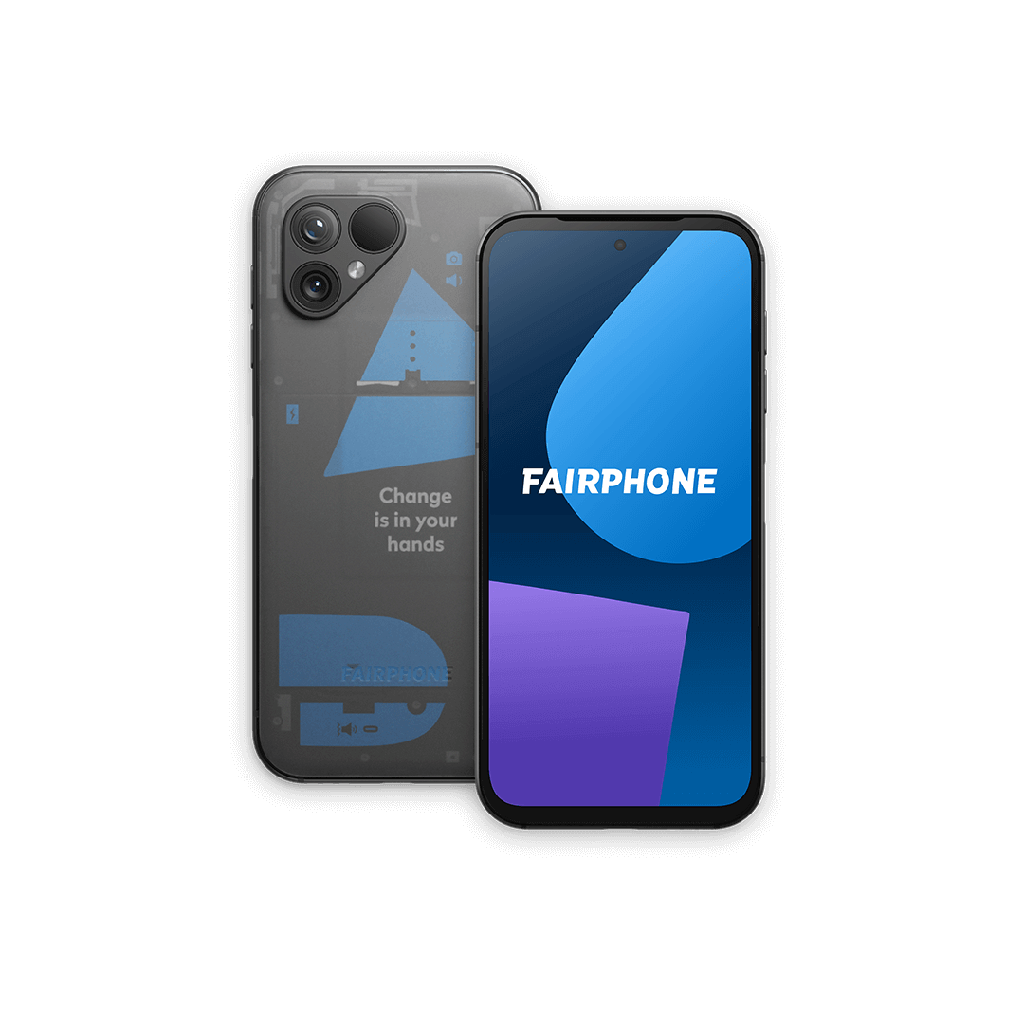
Fairphone 5
The Fairphone 5 is the most repairable phone we’ve tested, and it looks just like a modern flagship. It’s powerful, has a great battery, and a good camera.
[adinserter block=”8″]
Credit : Source Post

